Delving into Nara's Unique History and Culture
Tour guides (Tokyo & Nara)
Words by Mari Hashimoto

Japan’s capital of Tokyo is home to many galleries and museums. However, if you want to learn about Japan’s history and culture through cultural properties that span the country’s entire length, from Hokkaido to Okinawa, over a time period stretching from the Neolithic age to the modern day, there is only one place to visit: the Tokyo National Museum.
For those with an interest in East Asia’s ancient capitals, though, central Nara cannot be missed. With its palace ruins and old wooden structures, the area has conserved a unique cultural landscape that still appears today much as it did in antiquity. In 1998, the region was registered as a UNESCO World Heritage Site under the title ‘Historic Monuments of Ancient Nara.’ With two further World Heritage Sites (‘Buddhist Monuments in the Hōryū-ji Area’ and ‘Sacred Sites and Pilgrimage Routes in the Kii Mountain Range’) within its borders, Nara Prefecture has vividly preserved the past in concrete form in its natural scenery, ruins, temples, shrines and other tangible cultural properties, and also in its associated ceremonies and events. There are so many places worth visiting in Nara. Let’s take a look at some of them now.
Map(Nara)
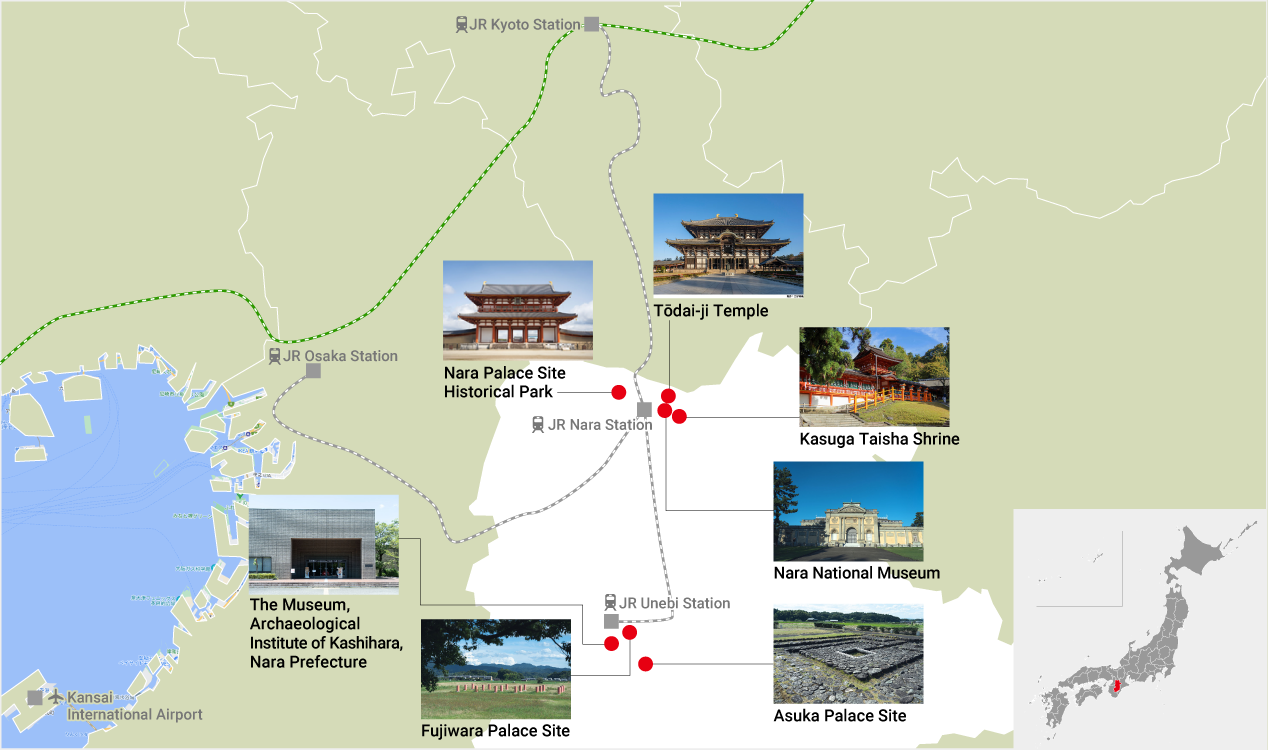
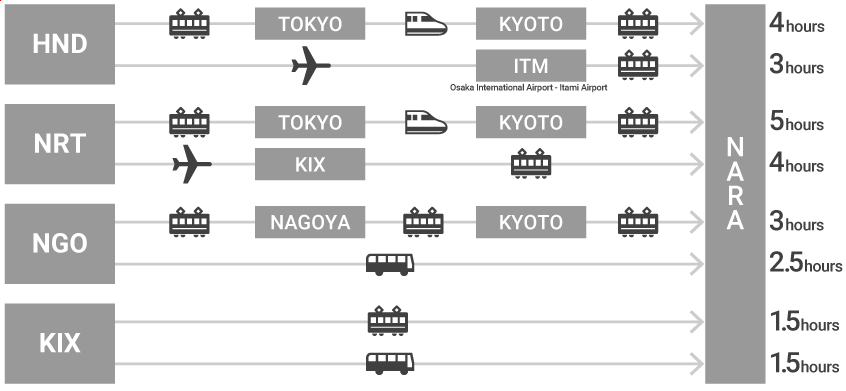
Nara National Museum

The Nara National Museum is located in a corner of Nara Park surrounded by famous temples and shrines like Tōdai-ji, Kōfuku-ji, and Kasuga-taisha. Japan has five national museums, located in Tokyo, Kyoto, Nara, Fukuoka and Hokkaido. What sets the Nara National Museum apart is its unique focus on Buddhist art cultivated through a deep faith in Buddhism.
The museum comprises several exhibition buildings, each with their own distinct emphasis. The Nara Buddhist Sculpture Hall is dedicated to Japanese Buddhist statuary from the 6th to the 14th centuries and it permanently displays around 100 Buddhist statues from the museum’s collection, including National Treasures and Important Cultural Properties. The Ritual Bronzes Gallery exhibits the museum’s collection of ancient Chinese bronzes. The East and West New Wings hold special exhibitions of Buddhist art and masterpieces from the museum’s collection, including paintings, written materials, decorative arts and archeological artifacts. They also stage the Annual Exhibition of Shōsō-in Treasures, held each autumn to exhibit treasures gathered and donated during the Nara Period preserved for nearly 1,300 years. These wings are also venues for exhibitions that delve deeply into Nara’s unique history and culture, including shows planned to coincide with calendrical rituals and festivals like Tōdai-ji’s Omizutori and Kasuga-taisha’s Wakamiya Onmatsuri.





Nara National Museum
- Address
- 50 Noboriōji-chō, Nara 630-8213
- Tel
- 050-5542-8600 (Hello Dial)
- URL
- https://www.narahaku.go.jp/english/
- Opening hours
- 9:30 a.m. to 5:00 p.m.
On Saturdays, the museum is open until 8:00 p.m.
Last entry is 30 minutes before closing.
In addition, there may be temporary changes to museum hours. - Closed
- The museum is closed on Mondays* and from December 28th to January 1st.
*When a national holiday falls on a Monday, the museum remains open and closes that Tuesday. In cases of consecutive holidays, the museum remains open and closes the day after they end.
Exceptionally open on Mondays: May 1, March 1-14(in the period of Todai-ji Omizutori Ritual)
Please note that the museum sometimes closes on other days as well. - Admission
- General Admission
Individual 700 yen
College Students
Individual 350 yen
Free of charge entry to people aged 18 years or younger and high school and below.
Free of charge entry to disabled certificate holders and an accompanying caretaker (upon presenting the certificate).
Free of charge entry to people aged 70 years or more (Proof of age is necessary).
Tōdai-ji Temple and Tōdai-ji Cultural Center (Tōdai-ji Museum)

Tōdai-ji Temple was built in the 8th century after the Emperor ordered the construction of state-sponsored temples across Japan. Tōdai-ji also houses a colossal image of Vairocana known as the ‘Daibutsu’ (‘Great Buddha’), with the temple and the Daibutsu playing a central role in Japanese Buddhism while surviving numerous disasters. The temple has been rebuilt several times after these disasters, with its buildings and statues an impressive mix of different eras and styles. Another must-see is Tōdai-ji Museum, located on the left through the Great South Gate. Here, visitors can enjoy permanent exhibitions, thematic exhibitions and special viewings themed around the history and art of Tōdai-ji Temple. The museum is also home to several valuable Nara-period statues that were originally housed in Tōdai-ji’s oldest structure the Hokke-dō (Lotus Hall), built in the early 8th century.


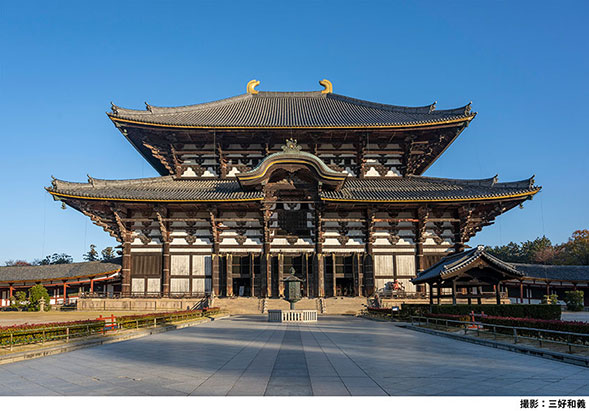
Tōdai-ji Temple (Kegon Sect)
- Address
- 406-1 Zoushicho, Nara
- Tel
- 0742-22-5511
- URL
- https://www.todaiji.or.jp/en/
- Opening hours
- Great Buddha Hall (Daibutsu-den)
April–October: 7:30–17:30
November–March: 8:00–17:00
Hokke-dō (Sangatsu-dō)/Senju-dō at the Kaidan-in
8:30–16:00
Open year-round
The Kaidan-dō is closed temporarily for conservation work and seismic retrofitting. It will open again from October 1, 2023. The Senju-dō at the Kaidan-in has been specially opened to the public while the Kaidan-dō is closed, but the Senju-dō will close again from Sunday, September 25, 2023. - Admission
- The following admission fees are charged at the Great Buddha Hall (Daibutsu-den), Hokke-dō (Sangatsu-dō) and Kaidan-dō.
Adults (junior high school or older): 600 yen, Elementary school students: 300 yen
(group discounts and other discounts are available)
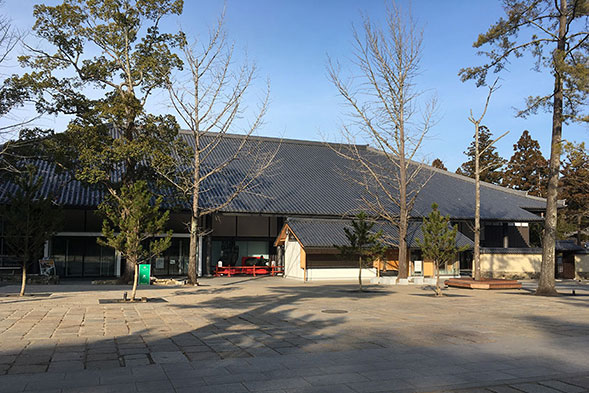
Tōdai-ji Cultural Center (Tōdai-ji Museum)
- Address
- 100 Suimoncho, Nara
- Tel
- 0742-20-5511
- URL
- https://www.todaiji.or.jp/en/information/museum/
- Opening hours
- April–October: 9:30–17:30
November–March: 9:30–17:00 - Closed
- During exhibit rotation and from August 28–September 30, 2023.)
- Admission
- Adult (junior high school or older): 600 yen, Elementary school students: 300 yen
Joint pass for Tōdai-ji Museum and the Great Buddha Hall
Adults (junior high school or older): 1000 yen, Elementary school students: 400 yen
The Museum, Archaeological Institute of Kashihara, Nara Prefecture

The Archaeological Institute of Kashihara, Nara Prefecture has been researching buried cultural properties in Nara Prefecture since 1938. The valuable artifacts unearthed during this research are displayed at Archaeology of Yamato, a permanent exhibition that presents a comprehensive overview of the history of Japan and Nara from the Paleolithic age, some 25,000 years ago, to the 16th century. When the museum was renovated in 2021, this exhibition was also updated to reflect the latest discoveries, with around 30% of its 13,000 or so exhibits replaced with new display items. The focus on buried cultural properties from Nara Prefecture means visitors can always encounter artifacts from the Kurozuka Tomb, Fujinoki Tomb and other sites that have had a major impact on Japanese archaeology.



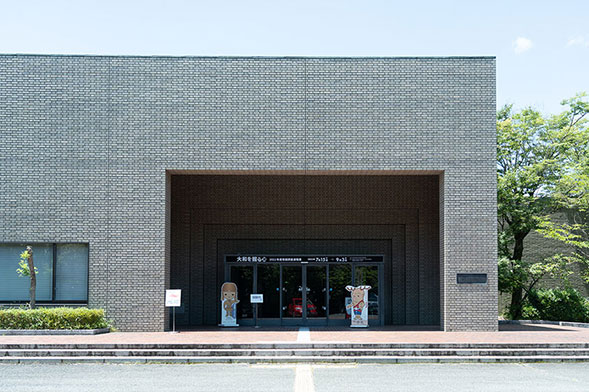
The Museum, Archaeological Institute of Kashihara, Nara Prefecture
- Address
- 50-2 Unebicho, Kashihara
- Tel
- 0744-24-1185
- URL
- http://www.kashikoken.jp/museum/top.html
- Opening hours
- 9:00–17:00 (last entry is 30 minutes before closing)
- Closed
- Mondays (if Monday falls on a national holiday, the museum stays open and is closed the following day), special museum holidays (on days designated by the museum), and December 28–January 4
- Admission
- Adults: 400 yen (350 yen), High school and university students: 200 yen (150 yen), Elementary and junior-high school students: 200 yen (150 yen)
Prices in brackets () indicate fees for groups of 20 of more people
(Admission fees may change for special exhibitions)
Kasuga Taisha Shrine and Kasuga Taisha Museum

Kasuga Taisha was built at the foot of Mount Mikasa in 768 on the orders of Emperor Shōtoku, with the ancient shrine deeply venerated by the Imperial Family and ordinary folk ever since. The deer within the shrine grounds are cherished as messengers of the gods. Kasuga Taisha Museum houses and exhibits many sacred treasures that were dedicated to the gods from the 9th to the 12th century. The entire mountain behind the shrine is considered sacred, with hunting and tree felling forbidden. As a result, the area is a treasure trove of flora and fauna and it has been designated a Special Natural Monument as ‘Mount Kasuga Primeval Forest.’


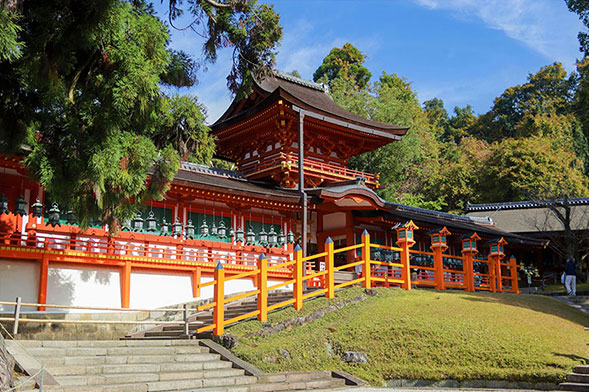
Kasuga Taisha Shrine
- Address
- 160 Kasuganocho, Nara
- Tel
- 0742-22-7788
- URL
- https://www.kasugataisha.or.jp/en/about_en/
- Opening hours
- General Worship of the Main Sanctuary: 6:30–17:30 (7:00–17:00 between November–February)
Man’yo Botanical Garden: 9:00–16:30 (9:00–16:00 between December–February)
Open year-round - Admission
- Entry is free, though there is a 500 yen fee for Special Worship in the Honden (Main Shrine)
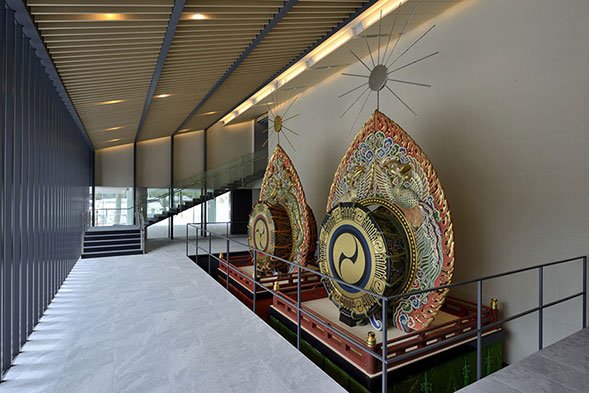
Kasuga Taisha Museum
- Address
- 160 Kasuganocho, Nara
- Tel
- 0742-22-7788
- URL
- https://www.kasugataisha.or.jp/en/about_en/
- Opening hours
- 10:00–17:00 *Last entry 16:30
- Closed
- During exhibit rotation
- Admission
- Adults: 500 yen, High school and university students: 300 yen, Elementary and junior-high school students: 200 yen
(Admission fees may change for special exhibitions)
Asuka Palace Site

In 588, the powerful Soga clan constructed Japan’s first ever temple in their stronghold of Asuka. From the dawn of the 7th century, meanwhile, successive emperors built their palaces in Asuka, with these collectively known as the Asuka Palaces. When the capital was relocated to Fujiwara-kyō in 694, the dismantled ruins of these Asuka buildings were carefully covered with soil and abandoned. The site subsequently became farmland, with no large-scale developments taking place thereafter, so the palace remnants remained undamaged beneath the rice fields like giant time capsules. The sites have since been excavated and work is now underway to restore the stone-paved square and large well of Asuka Kiyomimhara Palace.

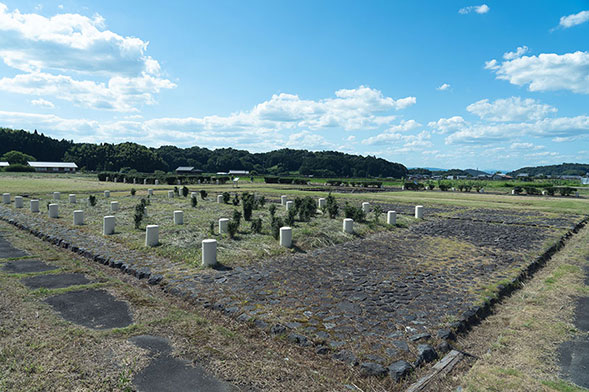
Asuka Palace Site
- Address
- Oka, Asuka Village, Takaichi District
- Tel
- 0744-54-3240 (Asuka Tourism Association)
- URL
- https://english.asukamura.com/9412/
Fujiwara Palace Site

Japan’s capital moved from Asuka to Fujiwara-kyō in 694. Fujiwara-kyō was the first castle town in Japan to be truly built on the Chinese grid model. Three emperors reigned here, with the political system also changing. Before, great kings had ruled as the heads of coalitions of elite clans. Now the Emperor became head of state supported by a legal system and a bureaucracy. Today, we can still see the ruins of the Imperial Palace, the Emperor’s abode at the center of the capital, and the Imperial Audience Hall, where the Emperor conducted ceremonial and political activities.

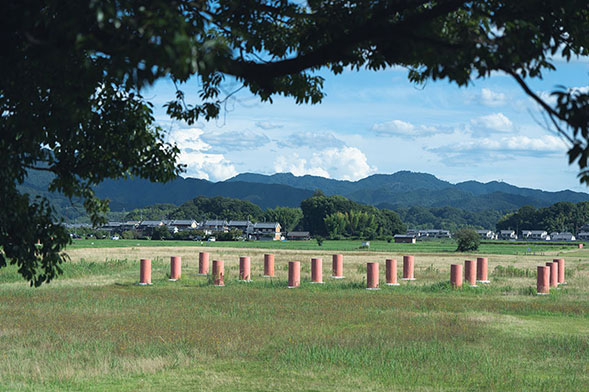
Fujiwara Palace Site
- Address
- Takadonocho, Kashihara
- Tel
- 0744-21-1114 (Kashihara City World Heritage Registration Promotion Department)
Nara Palace Site Historical Park

In 710, Japan’s capital moved from Fujiwara-kyō to Heijō-kyō. The new capital was built in a sprawling grid pattern, with the basic grid measuring around 4.3 km from east to west and 4.8 km from north to south, and the Gekyō (Outer Capital) measuring around 1.6 km from east to west and 2.1 km from north to south. Around 100,000 people are thought to have lived in Heijō-kyō. The capital was relocated again at the end of the 8th century, around a century later, with the Heijō-kyō site then becoming farmland. After hearing folktales about an ancient capital, volunteers began excavation work in the 19th century, with the 8th century castle town gradually revealing itself again thereafter. In recent years, part of the site has become a park. Visitors now have the opportunity to explore the contours of the ancient capital through the Excavation Site Exhibition Hall, the Nara Palace Site Museum, and reconstructions of the Suzaku Gate and Former Imperial Audience Hall.


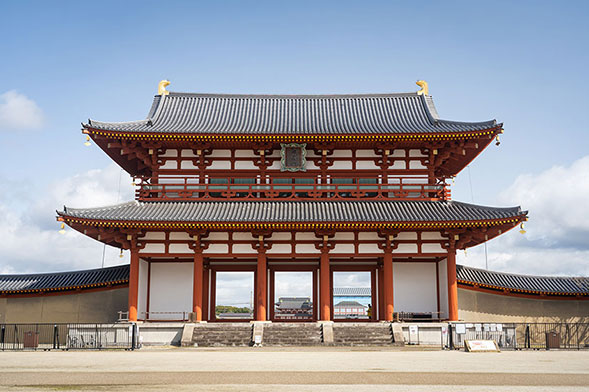
Nara Palace Site Historical Park
- Address
- 4-6-1 Nijo-ojiminami, Nara; Sakicho, Nara
- Tel
- 0742-36-8780 (Nara Palace Site Management Center)
- URL
- https://www.heijo-park.jp/en/
- Opening hours
- Different for each facility
- Closed
- Different for each facility
- Admission
- Entry to the park is free
Tokyo National Museum

As Japan’s foremost museum in the humanities field, Tokyo National Museum (TNM) displays, collects, preserves, and researches cultural properties from across Japan and the wider Asian region. Founded over 150 years ago, TNM’s collection houses around 120,000 objects, including 89 National Treasures and 649 Important Cultural Properties (as of April 2023). TNM has six galleries: Japanese Gallery (Honkan), Japanese Archaeology and Special Exhibition (Heiseikan), Asian Gallery (Toyokan), The Gallery of Horyuji Treasures, Hyokeikan (all within the museum grounds), and Kuroda Memorial Hall (located outside the grounds). Around 3,000 items from the collection are on permanent display in Regular Exhibitions, with TNM also staging around 5 or 6 special exhibitions a year. Though perhaps not immediately apparent, TNM also has a strong connection with Nara. During the Meiji era (1868–1912), Hōryū-ji Temple, a registered World Heritage Site, donated a number of cultural properties to the Imperial Household. These treasures were later granted to the Tokyo Imperial Household Museum, TNM’s predecessor, and they are now displayed together in The Gallery of Horyuji Treasures. Here, it feels like the immense power of this ancient Nara temple has been transported fully to Tokyo. With exhibits rotated around 300 times a year, TNM is a museum where new discoveries can be made with every visit!


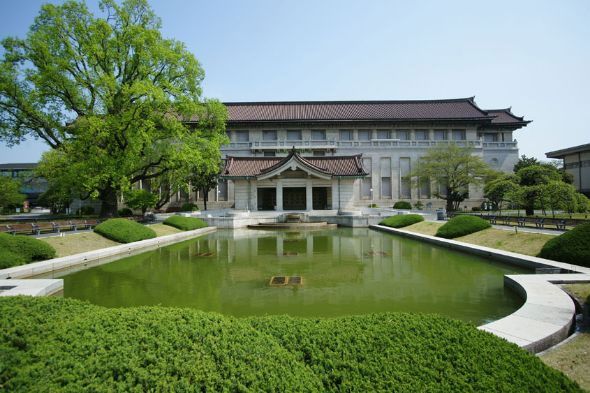
Tokyo National Museum
- Address
- 13-9 Ueno Park, Taito-ku, Tokyo
- Tel
- 050-5541-8600 (Hello Dial)
- URL
- https://www.tnm.jp/?lang=en
- Opening hours
- 9:30–18:00 (regular exhibitions close at 17:00; last entry to all the galleries is 30 minutes before closing)
- Closed
- Mondays (if Monday falls on a national holiday, the museum stays open and is closed the following day) and during the year-end and New Year holiday.
*Please check on Tokyo National Museum’s website for other times when the museum may be closed. - Admission
- Adults: 1000 yen, University students: 500 yen
Admission to regular exhibitions is free for high-school students, people under 18, and people over 70

